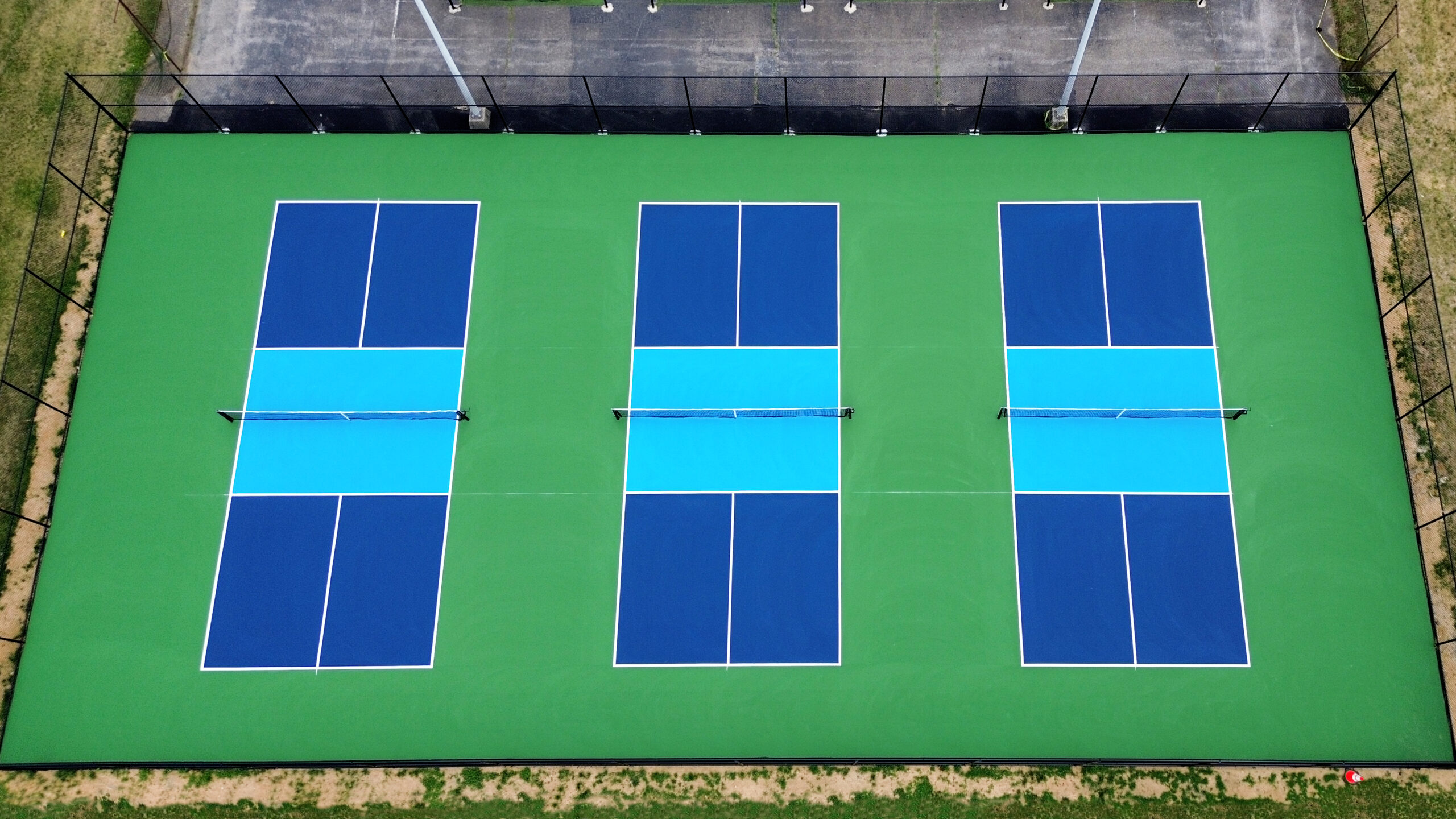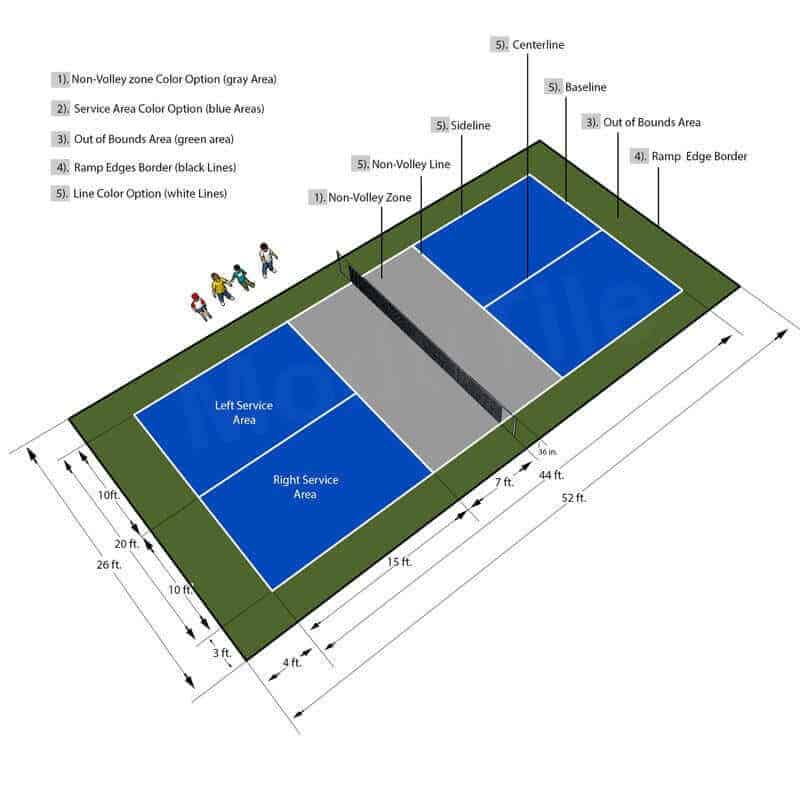Indoor and Exterior Pickleball Court Construction Solutions
Indoor and Exterior Pickleball Court Construction Solutions
Blog Article
Lasting Practices in Pickleball Court Construction You Need To Know
As the popularity of pickleball continues to climb, so also does the demand for sustainable techniques in court construction. This method not just addresses environmental concerns however also boosts the longevity and capability of the courts. From selecting environmentally friendly products to executing efficient water drainage and energy-saving illumination solutions, there are many techniques to consider. The impact of these techniques extends much past the court itself. Recognizing how each element adds to a more lasting future invites further exploration right into the elaborate equilibrium in between recreational growth and ecological stewardship.
Selecting Eco-Friendly Products
Selecting environmentally friendly materials is a vital action in the construction of sustainable pickleball courts. The selection of sustainable materials not just reduces ecological effect however also enhances the long life and efficiency of the court. Trick materials include recycled rubber for the surface area, which provides exceptional durability and shock absorption while diverting waste from garbage dumps.
In addition, using locally sourced products minimizes transportation exhausts and sustains regional economic situations. Pickleball court construction. Making use of native woods for fence and seats can provide a lasting visual while making certain strength against the components.
Integrating permeable products for court structures can better add to sustainability by enabling natural water drainage and reducing overflow. These options not just safeguard regional communities but additionally advertise healthier play environments.
Effective Water Drainage Solutions
While the choice of environmentally friendly products is necessary, carrying out reliable drain options is similarly vital for keeping sustainable pickleball courts. Appropriate drainage not only protects the court surface from water damages yet likewise decreases disintegration and runoff, promoting ecological honesty.
Reliable water drainage systems can consist of permeable paving, which allows water to penetrate the ground instead than merging on the surface area. This minimizes the possibility of standing water, which can lead to mold and various other maintenance problems. Furthermore, including strategically put water drainage networks and swales can route excess water far from the court location, ensuring a dry playing surface and avoiding dirt disintegration.
Making use of native vegetation in the landscape design around the courts can better boost drain by absorbing excess water and minimizing runoff. These plants call for much less watering and promote biodiversity, aligning with lasting practices.
Additionally, it is crucial to routinely preserve the drain system to guarantee its lasting performance. This consists of clearing up particles and monitoring for clogs. By focusing on reliable drainage remedies, pickleball court manufacturers can significantly add to the sustainability and long life of the center, inevitably benefiting both players and the atmosphere.
Energy-Efficient Lights Options
As the need for pickleball remains to grow, integrating energy-efficient lighting choices into court style has actually my sources become significantly essential for sustainability. Conventional lighting systems usually eat excessive energy, adding to greater functional costs and environmental effect. As a result, embracing contemporary, energy-efficient innovations is vital for both new constructions and restorations.
LED (Light Emitting Diode) lights stands apart as a top choice as a result of its durability and energy savings (Pickleball court construction). Contrasted to conventional illumination, LEDs use around 75% much less energy and can last up to 25 times much longer, substantially reducing upkeep costs. The directional nature of LED illumination lessens light contamination, making certain that illumination is focused on the court rather than bordering locations.

Sustainable Surface Alternatives
Checking out sustainable surface area choices for pickleball courts has acquired traction among gamers and building contractors alike. The emphasis on eco-friendly materials not only aligns with the expanding ecological recognition but also enhances the performance and toughness of the courts.
One preferred option is making use of recycled rubber, which can be sourced from used tires. This product offers outstanding shock absorption, reducing the danger of injuries for gamers while promoting sustainability. Additionally, modular ceramic tiles made from recycled plastics provide one more practical choice. These tiles are very easy to install and change, and their flexibility permits numerous court setups.
Natural grass courts are likewise emerging as a sustainable choice, promoting biodiversity and reducing the heat island effect. However, they require regular maintenance and water, which may not straighten with all sustainability objectives.

Water Preservation Techniques

Another efficient technique includes the installation of rain harvesting systems. These systems collect and store rain for use in keeping court surfaces and landscape design. This method not just saves drinkable water but also minimizes reliance on metropolitan sources.
In addition, employing drought-resistant landscaping around the courts is essential. Native plants call for less water and are much better adjusted to neighborhood climate conditions, therefore reducing total water consumption. In addition, making use of reliable watering systems, such as drip irrigation, guarantees that water is supplied straight to plant origins, minimizing evaporation and waste.
Conclusion
Integrating lasting methods in pickleball court construction considerably adds to environmental preservation and source efficiency. Making use of environmentally friendly products, executing effective drainage solutions, and taking on energy-efficient lighting alternatives can substantially lower eco-friendly effect. Additionally, exploring lasting surface area alternatives and employing water preservation techniques boost the general sustainability of these entertainment facilities - Pickleball court construction. By prioritizing these techniques, the construction of pickleball courts can straighten with wider ecological goals while promoting durability and functionality within neighborhoods.
As the appeal of pickleball proceeds to rise, so too does the requirement for lasting methods in court building and construction.Picking eco-friendly materials is a crucial step in the construction of sustainable pickleball courts. By prioritizing energy-efficient lighting options, pickleball court fabricators can contribute to a much more sustainable future while meeting the requirements of stakeholders and gamers alike.Including lasting surface alternatives not only boosts the efficiency of pickleball courts but additionally leads the method for implementing effective water preservation methods.Including lasting methods in pickleball court construction substantially contributes to ecological preservation and resource performance.
Report this page